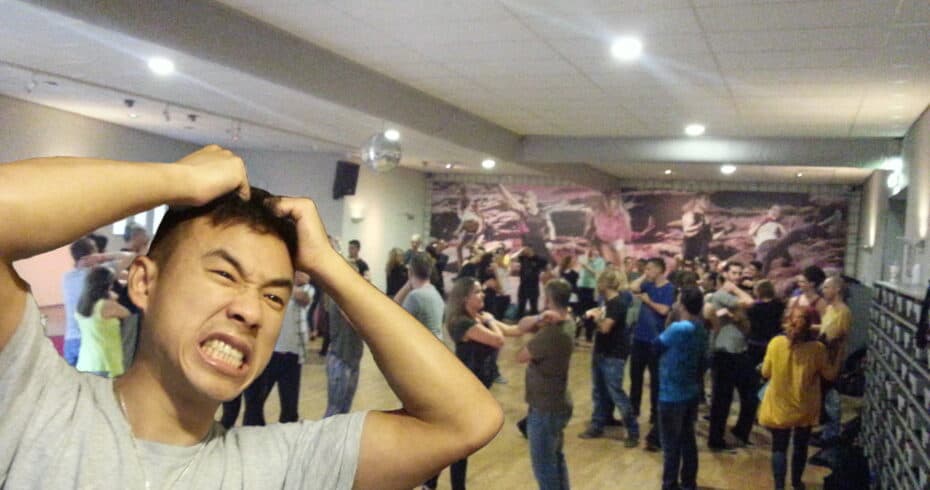With over a hundred students in one room, dance teachers are challenged in their teaching skills. Most dance teachers are extremely talented at dancing that made them well known for their art and mastery within this field. But when it balls down to teaching, they can still fail drastically!
As a dance student, the struggle was real!
Being an effective teacher will draw in students and gain even more popularity. Failing to do so can put students off forever attending another one of their classes, no matter how talented of a dancer they may be.
As a dance student, my initial aim was to experience as many different teachers as possible. Assessing each style, teaching method, and personalities. My main goal was and still is to become a proficient dancer on the dance floor within the shortest amount of time.
Dance teachers with better teaching skills had always been top of my list because I can see myself benefiting most from their clear and precise instructions. Those lacking teaching skills would only hinder growth, cause confusion, decrease in confidence, kills enthusiasm, and wastes valuable time and money.
UPDATES: Over the past 6 years since writing this blog, I have seen significant improvements because there are now many more amazing teachers to choose from now. However, saying that, some teachers still fails epically. So going out there and finding which teacher works for you is important research.
Now… Let us get to the 6 common mistakes that I found dance teachers made at congresses…
1. Forgetting to Rotate Partners!
Don’t you just hate it when everyone is so quick at grabbing a partner like it’s a Christmas or New Years’ sales? Failing to do so, you’ll end up without a partner and standing there like an idiot for an entire class. No student likes that, so please Teacher, reassure us that no one is not left out!
Another part of the rotation is being clear which direction and who should be moving.
Suggestion: Teachers, please remember to call out the rotation often, and at the beginning tell the students clockwise or anti-clockwise, and either the leads or follows should rotate.
Students, if you ever feel the teachers forget, please help remind them!
2. We Can’t See You!
Being a short-arse at only 5ft 7inches, I know how difficult it is to see over the shoulder of giants. Not being able to see what the teachers are demonstrating can be extremely frustrating, especially when they have already moved onto the next part of the movement and you are still trying to work out what the previous part was!
Suggestion: Teachers, this can be solved by asking the front row or inner circle of students to sit down every time the teachers are explaining or demonstrating.
Students, if you can’t reposition to see, don’t be afraid to ask the teacher to ask the front of row students to sit. We can all take some action for your own benefit.
3. We Can’t Hear You!
I’ve been to classes where it’s impossible to hear anything from the teachers. No public address (PA) system setup and a huge classroom filled with bodies absorbing the voices.
Suggestion: Teachers, please ask students to all come closer when explaining. If long explanations, have them sit so the voices can carry further out and not be blocked by bodies.
Students, if you really struggle, move closer to be in the front row and/or let the teachers know if they aren’t speaking loud enough.
4. Not Using Student’s Common Mistakes As Examples.
Many teachers would explain what they think is right or their way of dancing. However, as a student, we don’t even know if we are doing it right or wrong. In a large class, it’s even harder to try to go round correcting every student.
Suggestion: Teachers, to help students narrow down in the right direction without having to go round to every student, it would really help by explaining the common mistakes that students make. Showing and explaining examples of what teachers know is wrong is a great way to share the experience of what works and what doesn’t.
Students, if unsure what is right or wrong, ask and so the teachers and other students can benefit from your question!
5. Long Pattern Routines = Brain Overload!
With only an hour and a massive class filled with people of different levels, it is very difficult to teach long complex pattern routines!
There may only be a couple of highly experienced dancers within the class capable of remembering the entire pattern routine and executing every move perfectly. Unfortunately, I am not one of them…
Long pattern routines are mentally challenging and exhausting, prone to more mistakes, and the last thing you want is your body unconsciously memorising any bad habits and mistakes because of overload.
Suggestion: Teachers, bite-size learning had always been an effective and efficient way to learn. Even teaching a short routine but focusing on getting it right and spending the time to fix student’s mistakes would offer much better results.
“Classes that taught short patterns while going into details of one single movement or technique in detail are the ones I can still remember without rewatching videos. All the long pattern routines classes I have completely forgotten!”
6. Lowering Teaching Materials of An Advanced Class!
Do you think this is a wise choice? I have mixed feelings for this one because it’s one of those double-edged swords for teachers. Either way, they can’t win!
During many advanced classes, I’ve noticed how some Teachers ask the students to have a dance to a song and they would observe and assess the majority level of the Students. They would then teach according to their assessment.
The question is why do the teachers make either choice? Is it because they want most of the students to be able to get something out of this class? On the downside, it means the experienced students who are capable of learning advanced classes would never benefit. This was supposed to be an advanced class after all!
As mentioned, I have very mixed feelings for this because many would probably argue;
“A teacher’s role includes helping their students gain confidence rather than teaching materials beyond the students’ level and utterly destroying all the confidence they have to begin with.”
Suggestion: I would say this idea would require organisers to pre-qualify students and only once pre-qualified then students may attend these advanced classes. It’s impossible and not practical for teachers to be pre-qualifying during a class, there just isn’t the time.
Students, you could probably find a practise partner to go with and do not rotate, just make sure you stand outside the rotation circle to avoid confusing those rotating.
UPDATE: There are now better options for experienced dance students. Going to dance camps and weeklong training programmes where the levels are better controlled. Just make sure you check the registration/application process if there are any pre-requisites for level of experiences to meet.
—
In the early stages of your dance journey (0-3 years), I would recommend finding teachers who manage points 1-5 very well. This is essentially important when picking teachers to help build your dance foundation and fundamentals.
If you are a dance teacher or looking to become one, then this would give you an idea what some of the frustrations we students feel in classes, and hopefully help you make sure to cover these areas.
Many of these were all based on my own personal experience and observations. Are there any other common mistakes you’ve seen teachers make? Please share it in the comment!
Hoi x


I agree with the lastpoint a lot !
A few of my own “mistakes” teachers make
Spending too long speaking about random anecdotes- it’s nice to give examples of when things go wrong or that you knew someone that got injured from x,y,z etc….But I’m not in your class to hear your life story.
Also, I wonder whose responsibility doing a warm up is….But I don’t consider doing basic step variations for one song a warm up. You go to any solo dance class they will spend 20-30 minutes warming up and stretching. I think this is largely why people get injured even at parties, because they are taught not to warm up properly when dancing. If you take the class without warning up properly at best you’re not going to get the most out of the class as your muscles are still asleep and at worst you can get injured.
Also not sticking with the theme of the class. This is in part the organisers responsibility to label the classes properly. But if a class is called “head movements ” I expect to go into detail with learning head movement technique- I don’t object to combinations, but then call the class head movement combinations.
@Lauren, thanks for your thoughts on this topic and haha I get you with the anecdotes of their lives 😛
Warming up… thanks for reminding me of that because this is something I find oddly weird! I see teachers doing stretches and 1-2 songs as a warmup and think hm… this is not really how I was taught when it comes to warming the body up. Back in school for my physical education, we learned a lot about warming up, lubricating the body, stretching before and after exercise.
I’ve seen so many times where teachers would start stretching the body immediately before any warmup whatsoever. I grew up as quite a sporty person and from my understanding, you need and should be warming the body up first. Get the blood and heart rate pumping, get the joints to start secreting lubricants… which usually take about 20-30mins… ONLY THEN, you stretch, otherwise, you’ll end up with injuries and tear muscles, ligaments, and even damaging joints?
In the end, stretching and lightly bringing the heart rate down. the stretch at the end helps pushes the blood out of the pumped muscles to prevent cramping.
I tend to do my own warmup at the beginning and cool down at the end myself, but not many people I see do this (only some) because teachers don’t seem to cover this sufficiently enough.